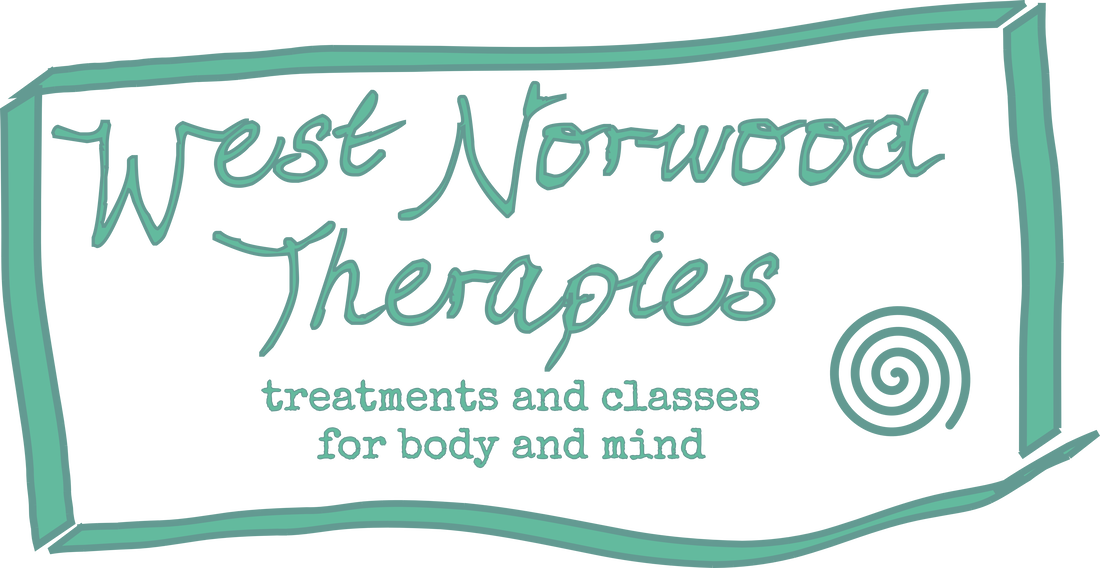|
Massage therapist Erika Zettervall shares an update on her experiment to see if running can help with depression and low motivation. Here she shares how this is going over the depths of winter and the effect it is having on her life. Still running
In my previous blog I had just taken up running regularly as a vehicle for keeping mind and mental state in good health. So here is a little update a few months along deep into mid-winter. I am still running - three times most weeks, for about 40 minutes and really enjoying it. The after-effect of brightness and energy in mind and body, even if the actual run sometimes felt like hard work, is really very nice. It definitely has been harder to get up when it’s dark and out of the door in the mornings during the winter. North is in my blood so temperature is not a deterrent and frosty ground a more pleasant experience than the mudslides our parks often turned into this time of the year and I also quite enjoy getting out in bad weather, better running than walking in the rain. Then afterwards it’s so nice to get back in and indoors feels lovely dry and warm. It’s more the general tiredness of January and winter with its short days, a time when, if possible, it’s okay to linger a little longer in bed and take it a bit slower. This coming week, February 1st, marks the halfway point between winter solstice and spring equinox. This day is also called Imbolc or st Bridgids day. From now on the acceleration in daylight per day is becoming more noticeable week by week. Amusingly, this day has lately gain notoriety due to an increased interest in old Irish and Gaelic traditions, a side effect from the many Brits looking into Irish roots in pursuit of a passport in the wake of Brexit and is now celebrated in several places in London. When it comes to avoiding slipping into depression, one of the purposes of the running regime, it is obviously impossible to know and compare how I would have felt if had not been running regularly. The dread and despair that I often experience around this time of the year, so familiar and recognisable I know it will pass, like a winter season of mind, but sometimes it sticks and turns into depression. This year it feels okay. The structure of running is helpful and having regular dose of joy and satisfaction from keeping up with the commitment is good mood boost but the sense of strength and vitality is the biggest benefit I experienced so far.
0 Comments
WNT founder Jennie Duck shares some thoughts around how light impacts our environment and what that means as we embrace the transition of autumn. My husband and I play a game in our house: I come into a room and turn the lights on, he comes in and turns them off. He is driven by environmental concerns, an aversion to waste and the cost of electricity. My drive is simpler and more visceral: happiness.
Light makes me happy. Different lights make me feel different types of happiness - a misty morning with the sun breaking through fills me with optimism and ideas for the day or an urge to take photographs of the beauty it shows up. Late afternoon light is more peaceful than the morning and speaks of socialising more than doing - beer gardens, barbeques or tea and cake depending on my age and stage. Soft lighting makes me feels safe, cosy, reflective, nourished. A bright kitchen light makes me want to put music on and engage with my family, while a darker room makes me feel like retreating and dampens my energy. I love the role that lighting plays in a therapeutic setting. My friend used to talk of 'entering the womb' when she came for a massage and I believe that plays no small part in the nourishing effect of a session at WNT or another thoughtfully lit treatment space. You are invited to slow down, to stop and retreat for a while. This entering into such a space reminds me of Autumn, a time of transition from long, bright, energetic days to short, dimmer, more slothful days – getting ready to enter the womblike winter where so much of the world around us is curling up to sleep. How does this transition sit with you? Are you like me and derive some of your inner spark from the light around you? Or are you more ambivalent about the role light has on your inner world? How do you adapt around this time of year? For me this time of year needs a conscious shift, a letting go and starting to prepare for hunkering down. In our home it means adjusting the lights we use in each room to make it cosy rather than bright, getting some candles out and replacing the bulbs in my salt lamps. We will also start to light the fire soon, which in our house is our primary heating source, and that brings with it extra cosiness and a particular type of restorative, wholesome, vital light and warmth. And pretty soon my husband and I will start a new game with the boost button on the central heating… Reflexologist and reiki practitioner Laura Devonshire looks at hydration - why it is so important, what it can affect and how much and what we should be drinking to keep hydrated. It’s summer (hurrah!) and this season’s theme at West Norwood Therapies is water. I have been exploring water and the human body and why hydration is so critical. Water is essential for life and for our bodies to function optimally. On average water makes up around 60% of body weight in men and 50-55% in women (this can vary depending on age and body composition). Drinking enough water each day is essential for the function of all the cells in the body, it helps us to: regulate body temperature, keep eyes and joints lubricated, helping to rid waste and transport nutrients, helps convert food into energy, protects the nervous system, prevents infection, and keeps organs functioning properly. Some organs contain much more water than others and I found it staggering to learn that the brain and kidneys possess the highest percentage of water: a whopping 80-85%, followed by the heart and lungs 75-80%, muscles, the liver and skin are 70-75%, blood is 50%, bones are 20-25% and lastly teeth at 8-10%. This helps to put into context how dehydration can have so many symptoms and consequences. The current UK recommendation is to drink 6-8 glasses of fluid per day, more specific recommendations about the quantity needed at different ages are shown below: (provided by the European Food Safety Authority (EFSA): The EFSA assume that 20% of fluid intake comes from food and 80% comes from drinks.
It is also important to note that doing strenuous activity or living in hotter or more humid climates may need more than the above. The body works hard to find balance and drinking too little or too much water can have severe consequences. The warning signs of dehydration include:
As mentioned above the brain contains 85% water, dehydration can also impact on cognitive function with difficulty in concentrating, impacting mood making us prone to feeling angry, anxious, and irritated. It’s important to note that on the flip side at the extreme end of consuming too much water, can lead to hyponatraemia, a very serious condition that causes extremely low sodium levels in the blood. It is more common for people to suffer with the symptoms of dehydration. The best way to avoid dehydration is to keep track of how much fluid you drink and drink water throughout the day. It’s ideal to avoid excessive caffeine drinks as they have a diuretic effect on the body, as does alcohol. Of course, I am not staying to cut them out but to just be mindful of intake and ensure you’re having an adequate water intake too. If you have been unwell with a fever or diarrhoea, playing sports or have been sweating a lot in high temperatures: drinking coconut water or a sports drink or rehydration drink can help to replenish your electrolytes and essential salts and minerals. Swap sugary drinks for sugar-free or no added sugar and dilute squash drinks to reduce the sugar content. If you don’t like the taste of water you can try sparkling water or try adding a slice of lemon or lime, some berries or cucumber. WNT founder Jennie Duck shares her love of river swimming and how she overcame her hesitations to get in the water this year. I live in Scotland right by the river. It has always been a fantasy of mine to live right by a river – a swimmable river – and sometimes I have to pinch myself to know that this is in fact my life. Normally I am itching to get in for my first swim of the year and this has been as early as April in our 5 years here. I have fantasies of going for a dip every day of the year at some point, but with young children and various life demands I am not aiming to achieve this anytime soon. But over the summer months I love to go in for mini-dips, mega-dips, paddles and full submersive swims. But this year I haven’t wanted to! With this theme of swimming for our summer news I volunteered to write about my first swim of the year and promptly regretted it when I realised that it would involve, well, going for a swim. I have a 9-month-old baby now as well as a 7yr old home-educated child and time has become so hazy and precisely precious all at once. We still live like in lockdown, we are both self-employed working from home and being alone is a hard thing to find at present. Having a shower now constitutes self-care time and I find myself having to choose between things that I used to value as daily activities. I can do some yoga OR tend to my veg patch. I can wash my hair OR go for a run. Swimming in the river involves a change of clothes, a short walk and a shower – that’s like 4 days personal activities all in one.. 😉 I kept thinking of the benefits I get from swimming outdoors – the freshness, the absolute presence in nature, the warm glow afterwards, the sense of achievement – and wondering when I would find these more urgent than a bit of time on my yoga mat or rescuing the beetroot from the weeds. It didn’t come – but my family did! I come from a family who grew up swimming in rivers and the sea. My mum used to say, “I’m always happy by water” and perhaps as a family of Ducks it is no surprise that we are all energised and nourished by water and being in it.
This was a different experience than the solo experience which boosts my emotional, mental and physical health by the combination of headspace, nature, exercise and freedom. This was fun, community, connection, joy, sharing AND nature, exercise and freedom!
As I read the interviews Tessa has done with her swimming clients and Philippa’s input on swimming around perimenopause, I can see the place for doing these things in community, for the joy that can only come from sharing and doing things together. The poet Ross Gay writes about his experience focusing on delight and joy “Which is to say, I felt my life to be more full of delight. Not without sorrow or fear or pain or loss. But more full of delight. I also learned this year that my delight grows—much like love and joy—when I share it.” Then I read Erika’s words on our senses and understand that I still want to go for my solo swims, to nurture my interior landscape as well. Maybe the weeds can defeat the beetroot this year and I can get in an extra few dips… Acupuncturist Mihaly Rosta shares some information about the Chinese Medicine concept of 'dampness' in the body and factors that might cause and help this. Is diet just about what you eat? Sluggishness (especially) in the mornings; Heaviness of body and mind; Bloating; Loose, sticky stools; Swelling; Weight gain. These are only a few symptoms of Dampness in the body. Damp.. what?
Imagine a clear beautiful river gracefully flowing through a forest. Now what if this river is being filled with debrish? It slowly becomes cloggy and turn into dirty mud. The most common cause for this muddiness to develop in the body is improper DIET. Excessive intake of fried, greasy, raw food; as well as alcohol, sugar, dairy, and even meat may result in the symptoms described above. However before removing unhealthy, overly processed foods from the diet, it’s important to intorduce new, appropriate foods in your diet. On the picture you may see a simple stir-fry dish, perfect for lunch or even breakfast -accompanied by some soup or tea. Bitter and slightly pungent/aromatic food like kohlrabi and romain lettuce are excellent at transforming congealed body fluids. Add some radish and leeks in order to strengthen the Lungs (Metal/Autumn) and clear any damp/phlegm that may reside there. Kidney -especially Aduki- beans are great source of protein in this case. Complementing the dish I also used garlic, thyme and parsley to help clear excessive mucus. To make this dish more seasonal, add some water and cook it on low heat. In order to introduce the sour balancing flavour of autumn (Metal) you may finish your dishes by squeezing some lemon/lime juice over them. Making small changes in the diet is an excellent tool for becoming more healthy over time. However if an already developed illness (or any of the symptoms above) are present, acupuncture treatment may be especially beneficial in order to address those issues. Please note that we always advise patients to see a professional Acupuncturist in order to determine the accurate diagnoses, which allows us to make personalised recommendations. For any seriously health concerns please see your GP. #diet #damp #acupuncture #bloated #sluggish #autumn WNT founder Jennie Duck considers how differently we interact with anniversaries of births and deaths and in the week of 'dying matters' shares what currently matters to her about death and dying. My son turns six in June – something generally agreed to be an exciting event, greeted with enthusiasm and joy (and, as parents, with utter awe that this person exists with a tinge of sadness that the stages he’s gone through are in the past now). It is a time for celebration; we tell people our birthdays and we enjoy marking them with cake and parties. Granted they might become a little less joyful if we are feeling resistance to aging, but they tend still to be a time we are cherished and celebrated.
In July it will be 5 years since my dad died and in February it was 4 years since my mum died. These dates loom very differently on my internal visual map of the 2022. While the anniversary of my son’s birth is a gentle peak, something with a very outward, yang energy, the anniversaries of my parents’ deaths are big craters with much more of an inward, yin energy. I describe these as ‘craters’ which sounds very negative, but I don’t feel like that. The crater-ish-ness is symbolic of the desire to retreat and go down into the grief, it is also a reminder of what the period around the deaths felt like. These were dark holes of time that have left their mark forever. But they are not something I ever want to avoid. They are there and my awareness of them is part of the landscape of my life now. These anniversaries change year to year. The first couple of years they hit extremely hard and involved a lot of reliving. I relived the week following my dad’s sudden death when we were absorbing the shock, whereas my mums rapid decline the week preceding her death was something I went through almost hour by hour the first two anniversaries. Now they are more mellow and I can’t always predict how it will pass. I do know, though, that it is vital to give them space, to allow for time and feeling the days leading up to it and sometimes beyond. I find it extraordinary how we interact with death in our society – or how we try and avoid interacting with death. There seems to be a sense that if we draw attention to anniversaries, it is reminding people of loss, of the pain of grief. But this loss and pain is always there, it doesn’t go away because we don’t talk about it or acknowledge it. For some people an anniversary might just feel like something that they need to get past, but for me it feels as vital as Christmas. It shapes the year, it helps me remember in a mind, body and spirit way that life is precious and fragile and cannot be taken for granted. This week is ‘dying matters’ week which draws important attention to the circumstances and environment of how we die and encourages conversations around death. It is easy to avoid putting attention towards our own death or that of anyone we love, be that practical or emotional attention. At the moment what matters to me about dying is that we remember it. That we remember it in our very act of living, that THIS is life, this is our existence, and it doesn’t go on forever. That we remember it in our relationships, that these people we rely on and share with and love so much will one day die. That thought that can be so crippling can also give us fire for living, an opportunity to savour who and what we have while we have it. And mostly, still in my relatively early years of grief experience, it matters that we remember the deaths of those that we have lost. That we remember their impact on our lives, how they shaped us and affected us. That we remember who they were in their lives, what they did with their time on earth and who they touched while they were around. And, finally, that we remember what we went through in losing them, how that moment rerouted our life path and changed us forever. If we can let ourselves remember this and really feel it then, perhaps, we can let ourselves really grieve, let go and really live. In honour of International Women's Day WNT founder Jennie Duck shares her joy in working with a team of women at WNT I have said it before and I’ll say it again – and again – Working With Women is Wonderful!! I did not intentionally set out to curate a team of women at West Norwood Therapies – I just set out to create a team that worked well together, that supported one another, that played their individual part in collaboration and contributing towards a healthy, happy and productive working environment. And it turns out this particular team of women does just that!
We are all professional and highly skilled in our fields and we all work well as independent, individual practitioners working one on one with clients. And then we come together and share, talk, laugh and support one another. During lockdown we had zoom calls almost every week and we all found this to be something akin to group therapy, a time we could check in and feel connected with one another. For the first time we are planning an in-house ‘retreat’ this summer – a few days away together to enjoy one another’s company and strengthen our personal as well as professional bonds and treat one another to our therapies too. Perhaps I’ve been lucky with this particular group of women, but given the women who have come and gone from WNT I know that the magic goes beyond our current small team. It is precious that we can mix the personal with professional, the emotional with the practical and offer one another a web of support where we feel secure and content in our work. Here’s to all the Wonderful Women of the World. We love men too but today is all about the XXs so here I acknowledge Wonder where it rises 😊 Acupuncturist and wholesome food enthusiast Philippa Summers shares some of the benefits and uses of bone broth and advises how to get a good batch going with insider tips and ideas to make it tasty and nutritious. I have always had an interest in cooking wholesome food for both enjoyment and health and am guided away from processed foods by choosing ingredients that ‘ran, swam, flew or grew’ in their most natural state. Like many people I have in recent years leant towards a more heavily plant-based diet with an emphasis on a wide variety of colourful fruit and veg, wholegrains and plant-based protein like lentils, pulses, beans and tofu. However, I do still eat fish and meat, buying far less but of higher quality, higher welfare - by trying to choose largely wild fish and meat that is free-range, grass fed, preferably organic - and using every last bit which brings me to the wonders of bone broth. It has been revered for its potent nutritional and medicinal properties by various cultures across the globe for thousands of years from ancient Greece, throughout Africa and Asia, to the infamous recuperative ‘Jewish Penicillin’. A South American proverb states ‘Bone Broth will resurrect the dead’. It had a reputation within Chinese Medicine stretching back over 2,500 years for its ability to support digestion and reproductive health – pre-conceptually for both men and women to support egg and sperm health, during pregnancy for mum and baby, and post birth to help mum rebuild her strength. Bone broth is packed with easy to digest gelantinous protein and amino acids from the collagen in cartilage, and minerals such as magnesium, calcium, phosphorus and potassium from the bones, extracted by long slow cooking. Wide ranging potential health benefits include helping to support skin, bone and joint health, soothing gut issues like ulcerative colitis and leaky gut, supporting immune function, helping recovery from upper respiratory infections and it may also help to promote good sleep. The combination of skin, joint and sleep effects likely make it beneficial for women post menopause, a time when increasing protein and reducing carbs can be helpful. We can get a bit caught up about what’s in food and what it is good for. Sometimes it is good just to let go of that and enjoy the wholesomeness because you know in another more intuitive way that it is nourishing. For me bone broth is one of those things. A warm soothing elixir! It is delicious drunk on its own, makes a great base for soups and stews. For convenience you can buy bone broth ready-made, conveniently packaged and delivered frozen direct from the farm to your door but it is far cheaper and satisfying to make your own. It cooks for so long that it is more economical on fuel to cook up a big batch so I collect any chicken bones both raw and cooked in the freezer until I have a good supply, supplementing them with some chicken carcass bones from the butchers to fill a stock pot. Chicken Bone Stock Recipe This recipe uses chicken bones and cooks for 4-6 hours. You could make a fish version substituting the chicken for fish heads and bones usually discarded by the fishmonger so very cheap – use about 1kg per litre of water - and simmer for one hour. Strain through muslin to remove all bones. You’ll need a large stock pot with a tight fitting lid. Ingredients:
Method: Optional: Before making the stock you can roast the bones for an hour in the oven until they are golden for a richer flavour.
The effort will more than pay off for the ease with which you can prepare a tasty meal or quick warming drink that nourishes you deep to the bone. Enjoy! Acupuncturist and kitchen dynamo Philippa Summers shares some guidelines for a hearty winter breakfast of champions that will warm you from the inside out and stoke your fire for the day ahead. Yum! What do you have for breakfast? Do you even have breakfast? It’s often a meal that people skip or habitually go for something quick like a cold bowl of cereal or a couple of slices of toast on the go but when the temperatures drop there is nothing like a comforting bowl of porridge to start the day and get the warmth going from the inside. It is quick to prepare, will sustain you all morning and is a gift to your whole digestive system. Try a water-based whole oat porridge, flavoured with a small spoonful of blood-nourishing molasses, and maybe some cinnamon and ground flax seeds.
Top with a sprinkling of pumpkin, sunflower and sesame seeds for extra goodness and a couple of spoonfuls of berries. I use frozen summer berries out of season and just warm them gently. For speed, and if you don’t mind a strangely coloured porridge just add them to the porridge towards the end of cooking. I like a splash of milk to finish it off when it’s in the bowl for that that combo of thick porridge and liquid milk. Delicious and nutritious! If you skip breakfast you may find yourself going for less nourishing alternatives as your blood sugar drops. It can precipitate a vicious cycle of sugar spikes, drops and unhealthy snacking. Starting the day with nourishing breakfast gets your eating habits off to a healthy start and one suggestion to prompt an appetite at breakfast time might be to replace supper with something very light late afternoon or early evening for a night or two, just to kick start a breakfast habit. Finally, try to make time to sit and enjoy your meals, including breakfast. The digestive process begins when we look at the food, anticipate it and the digestive juices start to flow. And we are more likely to chew our food well, another important part of the digestive process,if we are relaxed and not in a rush. Good digestion is as much about how we eat as what we eat. Enjoy! As 'Blue Monday' - apparently the most depressing day of the year - looms WNT founder Jennie Duck looks at some small actions that can help us navigate times of bleakness. Welcome to mid-January, the time when the anticipation and excitement of Christmas is over, the days are short and grey, we are often beginning a long ‘term’ of work or education and spring can feel a long way off. This year we are also 2 years into a pandemic that has brough uncertainty, fear, mistrust and pain in abundance. Whatever our personal experience of covid has been to date, the atmosphere around our country – indeed around the world – cannot fail to permeate our own individual world and we may be feeling the residue of this for a time yet.
We have things that can help us, however, and there is hope and peace to be found in amongst any bleakness. These are some things that can help when we feel short on optimism, energy or hope. Rest. Our bodies need down time, they need to switch off and we can take a leaf out of nature’s book and hunker down in these winter months. Walks in fresh air. Sometimes going outside is the last thing we feel like doing…but if we can make the step it can really help us feel more alive and at peace. Music. Music can lift us or it can connect us to the difficult feelings we need to feel. We can create playlists for whatever we want – to dance to, to cry to, to sing along, to remember people and experiences. Hugging. IF we’re lucky enough to have someone we love nearby then there is little more wonderful than a long embrace. If we are alone we can still hug ourselves – google ‘butterfly hug’ or look for our post from a year ago about this. Creativity. Finding ways to express ourselves whether this is to release some dark emotion or create beauty from nothing, connecting to our creativity is connecting to life’s energy. Meditation. Staying present, being here, everything as it is. Let go of struggle, effort and getting to know your mind and body more intimately, it’s so valuable. Yoga. If you practice yoga regularly you might be familiar with the space, acceptance and support that yoga can bring. Talking and sharing. When we feel bleak the most tempting thing can often be to shut down and hide away. And yet there is likely someone near to you feeling the same thing and the connection that can be gained by sharing your experience can be an incredibly warming feeling. Space and solitude. Just as important as connection with others is connection with ourselves, stepping out of the busyness of life and finding some space to be with ourselves. Take time out for things you enjoy. It can be tempting to throw yourself into the ‘shoulds’ and zone out the rest of the time, but if we can really let ourselves have the opportunity to find joy and fulfilment in something, whether it is going for a run, dancing in the kitchen or stroking the cat this is important stuff that we would do well to make central rather than peripheral in our lives. Give up! Some days nothing will help and perhaps what is needed is just to retreat into the murky waters and let yourself do absolutely nothing whatsoever. Therapies. Last but by no means least, go for a massage! Or for acupuncture, reflexology, reiki, sound therapies or any other therapy that feels good to you, gives you a space where you are looked after and cared for and leaves you feeling rested and revived. So as we approach ‘blue Monday’ we can keep in mind there are some ideas that can be helpful when life feels less vibrant. And sometimes they can help us remember that spring is just around the corner. |
AuthorBlogs from the WNT team. For our blogs from before June 2020 please see individual profile pages - it's a good way to get to know practitioners too. Archives
June 2024
Categories
All
|
|
Visit us - by appointment only please - in the office block in the Access Self Storage premises at 443 Norwood Road, London, SE27 9DQ
[email protected] Phone - please contact practitioners directly, or if not in a rush you can leave a message for us to call you back at 07931876931. |
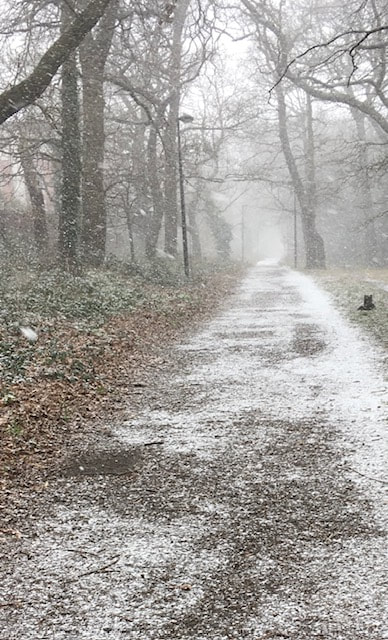
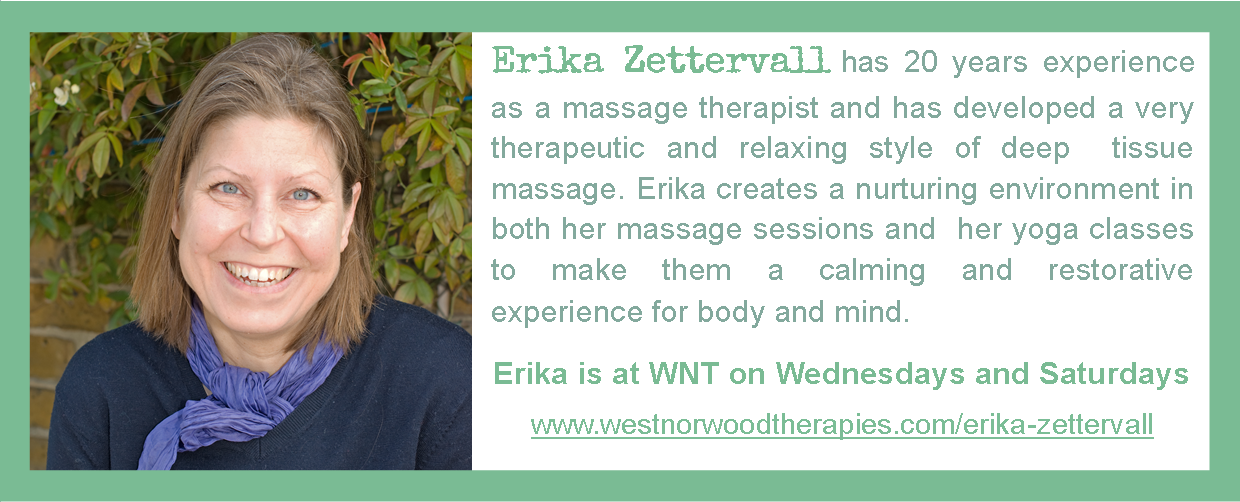
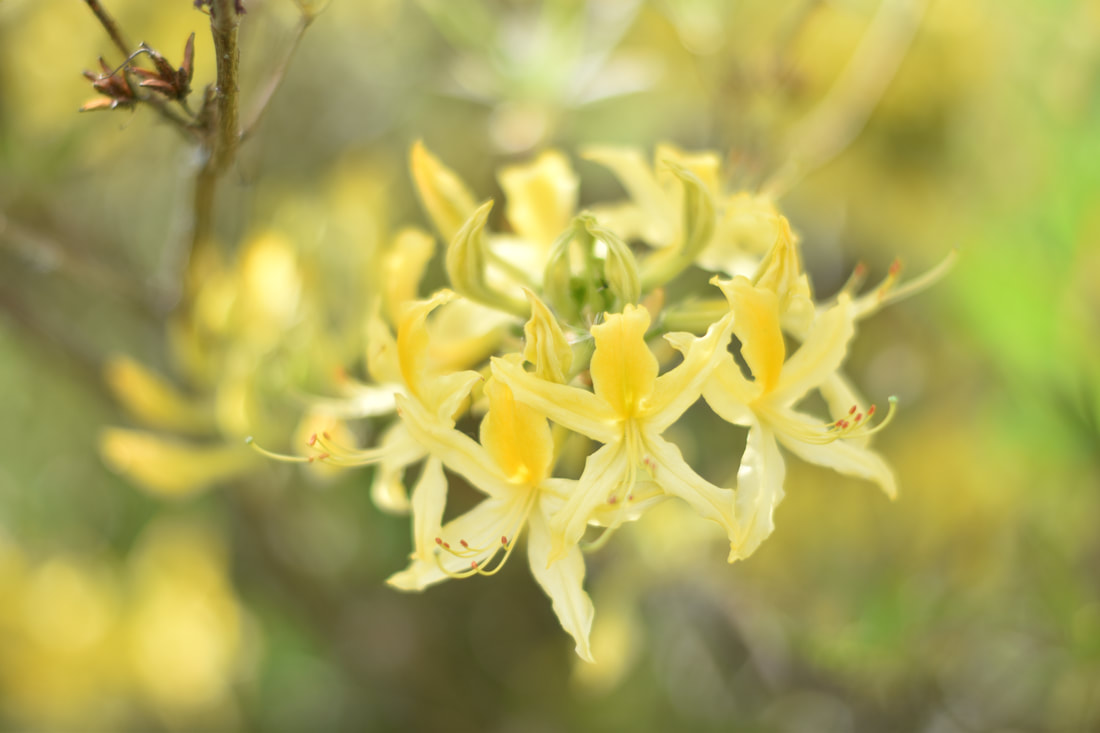
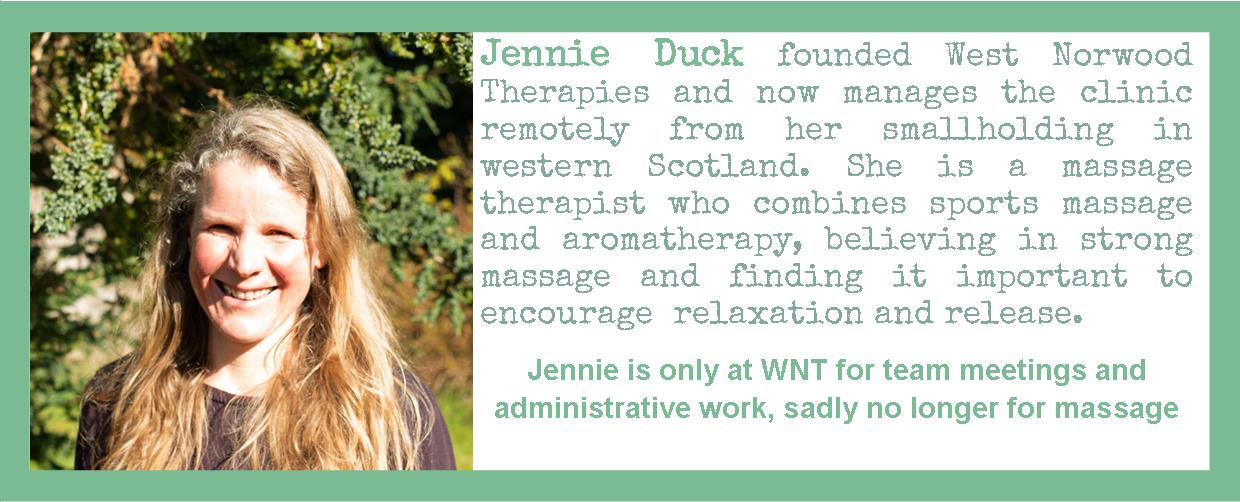
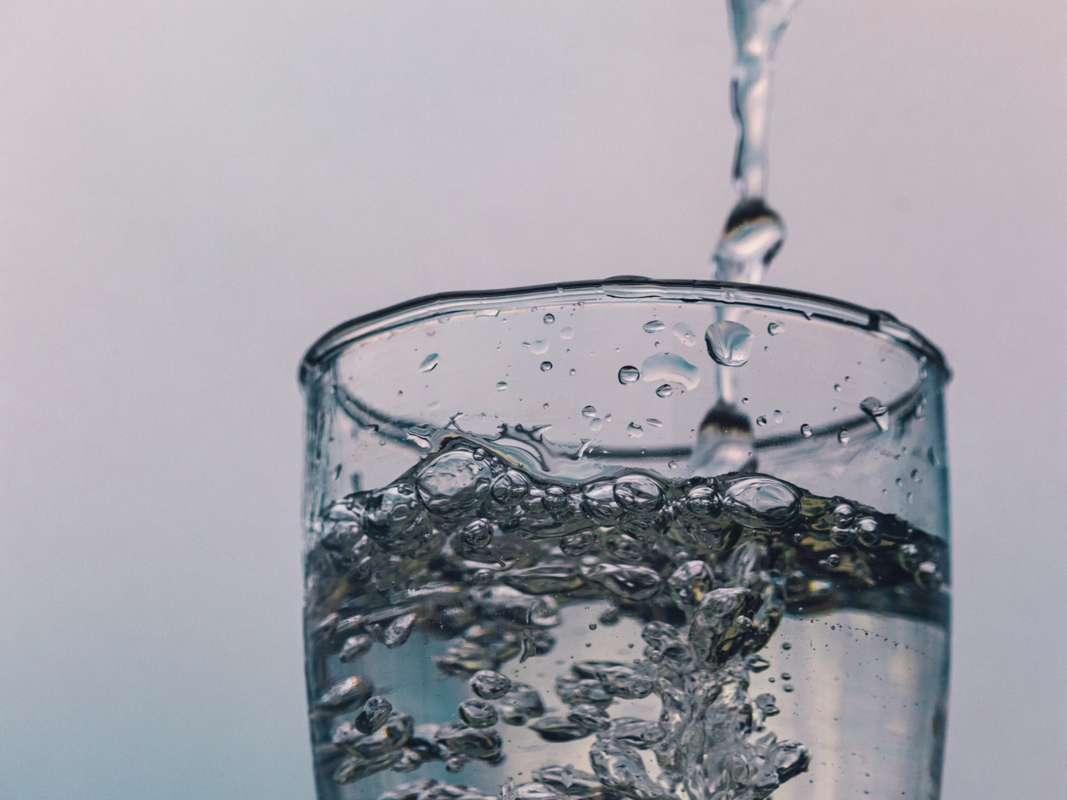

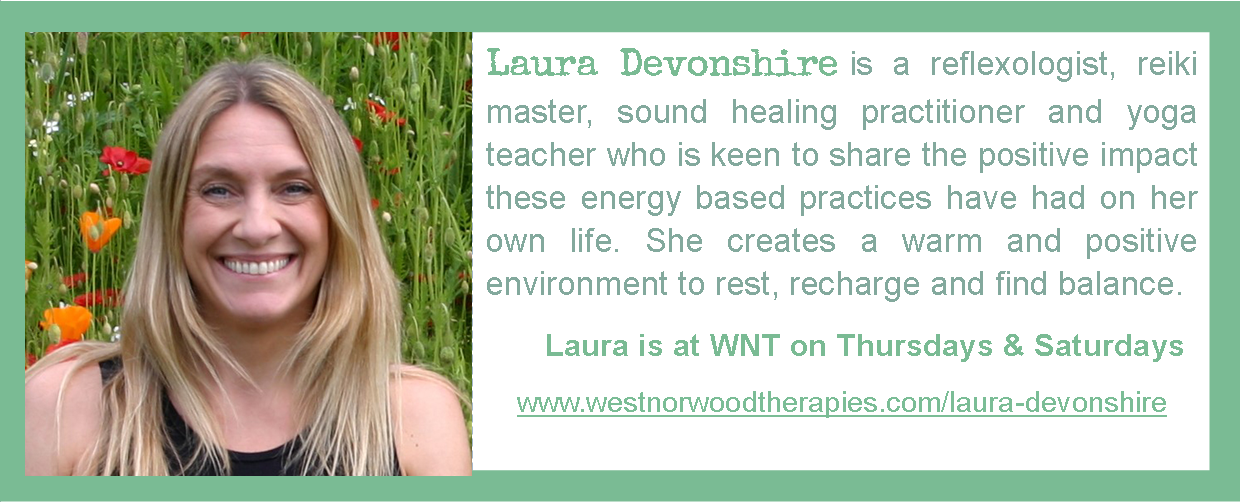
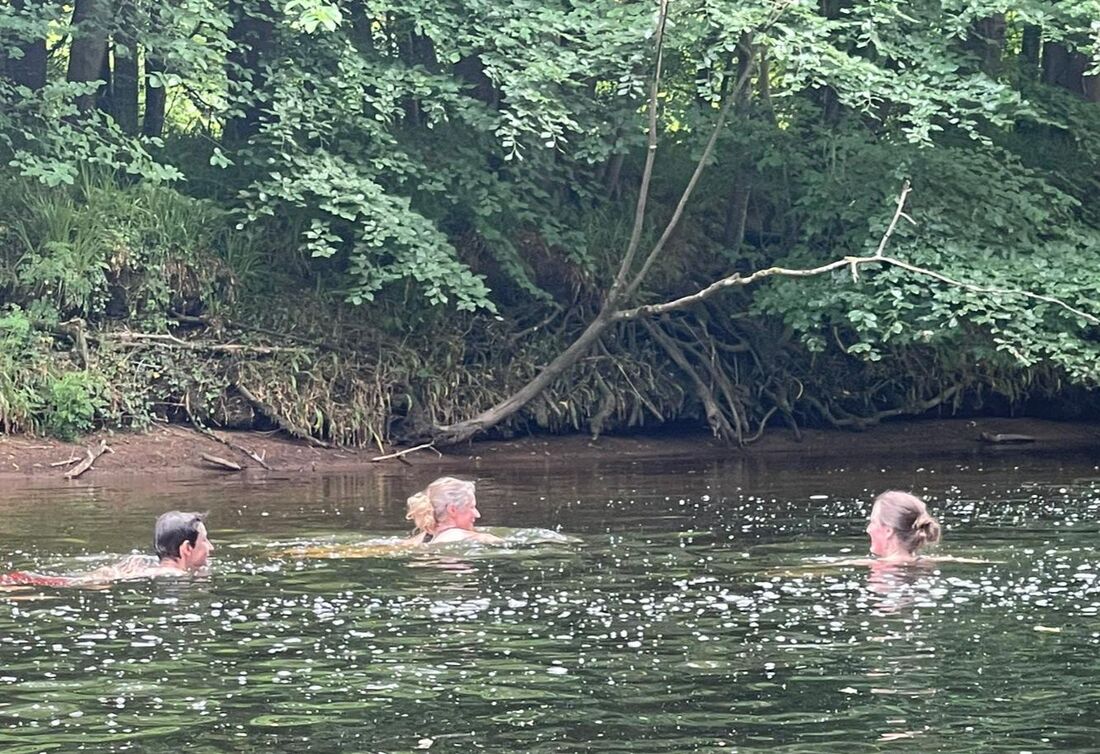
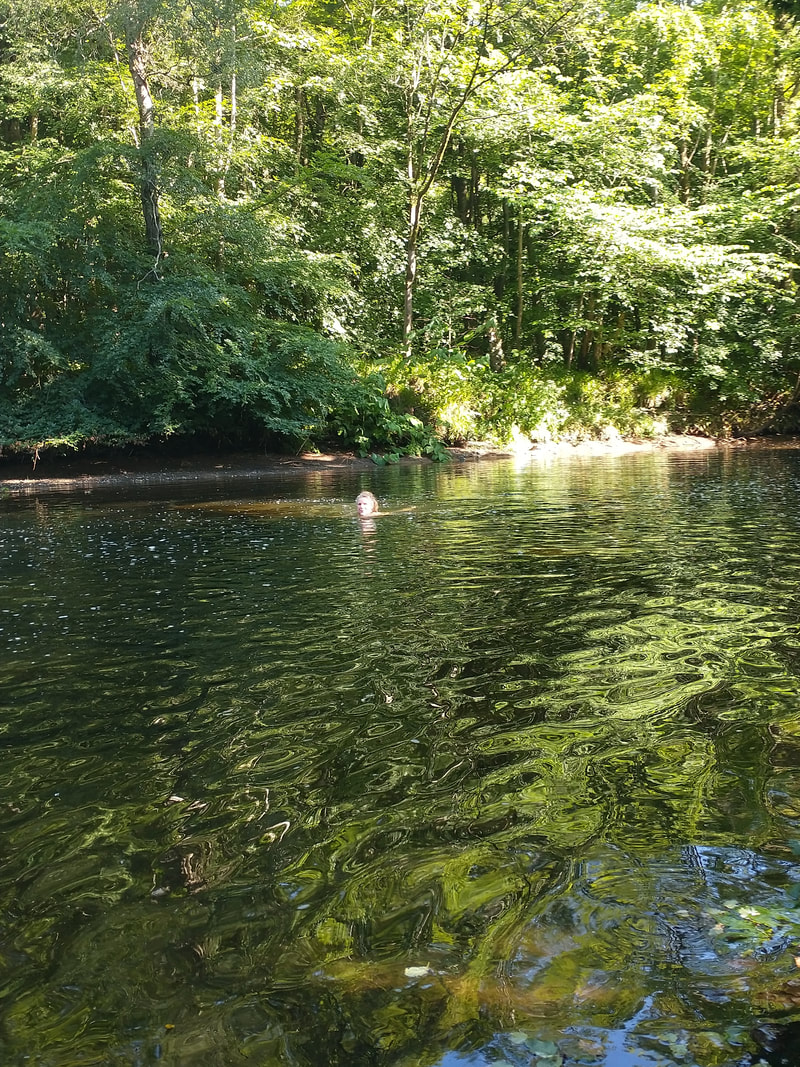
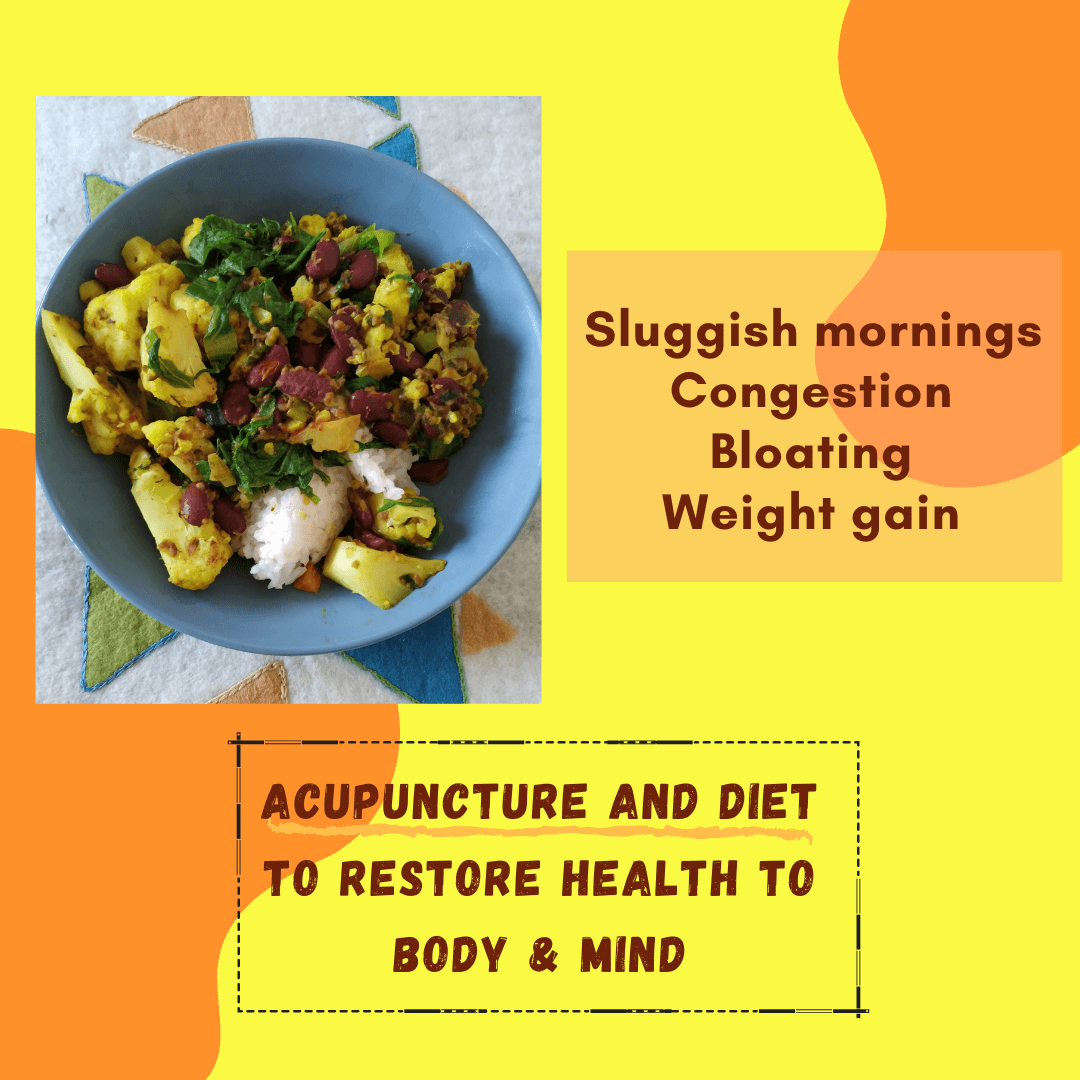
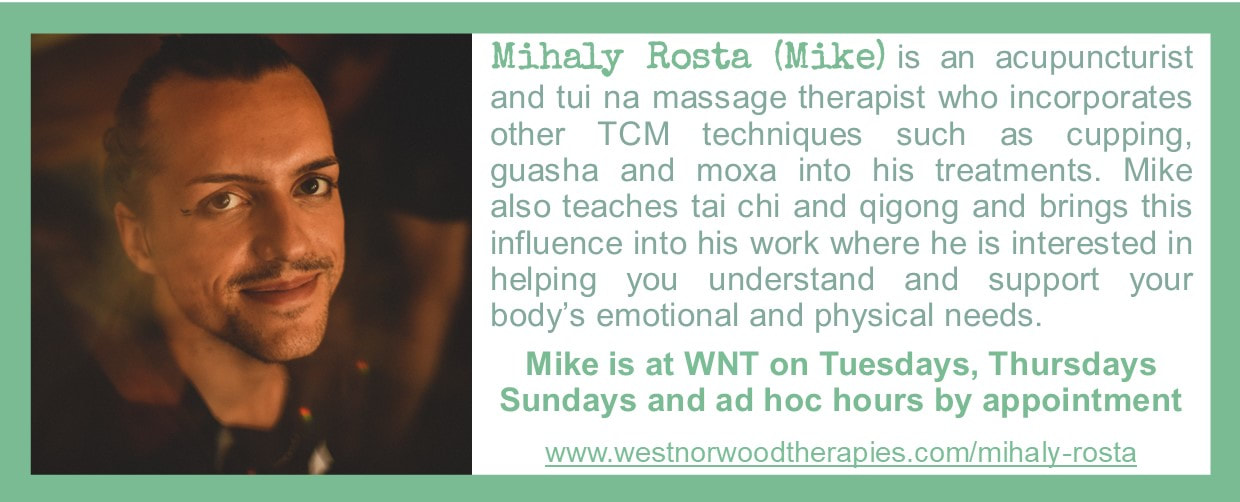

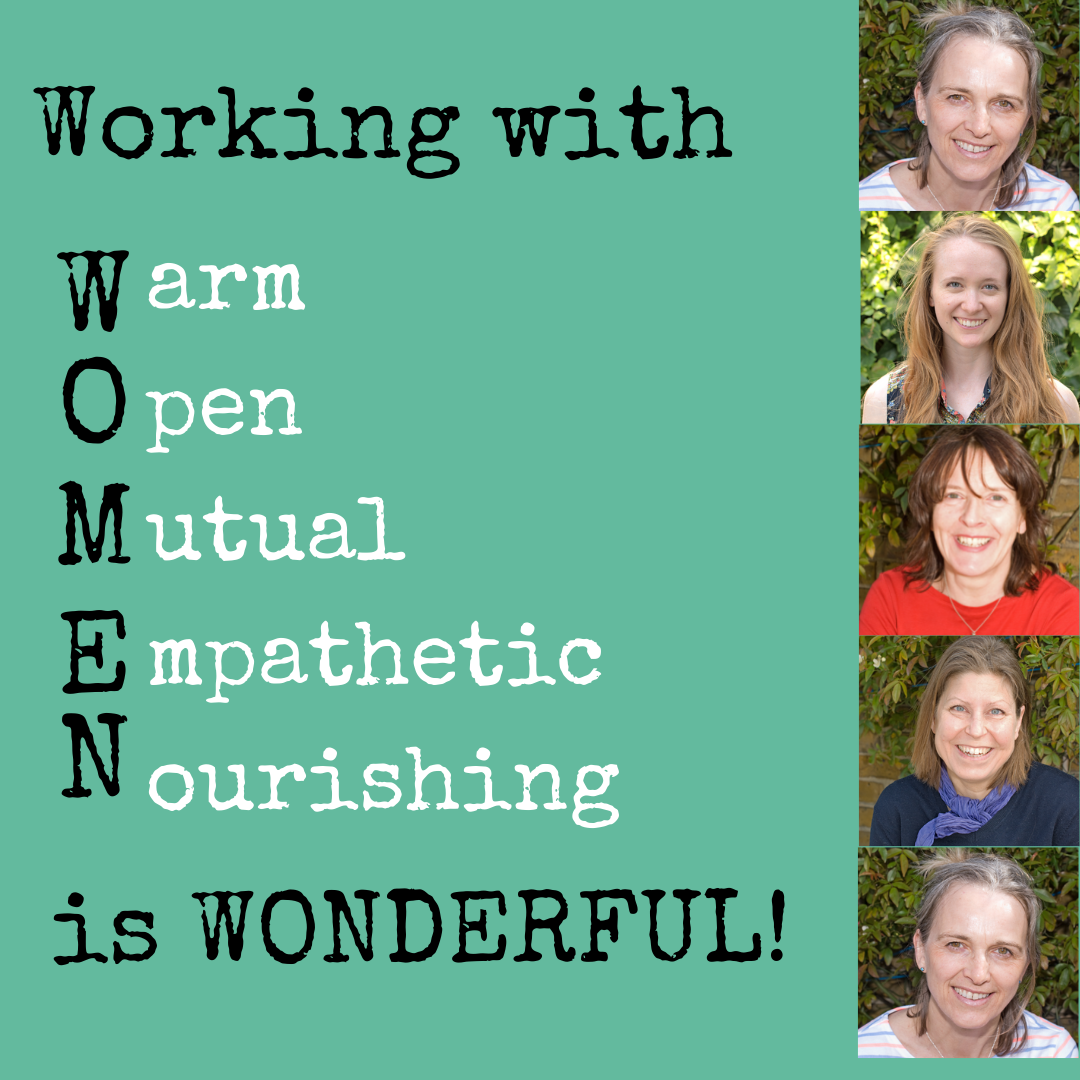
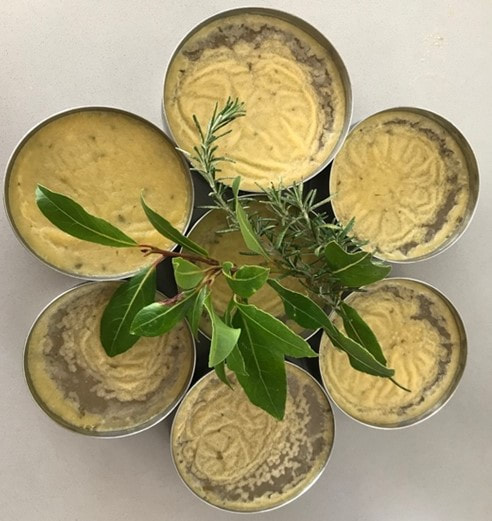
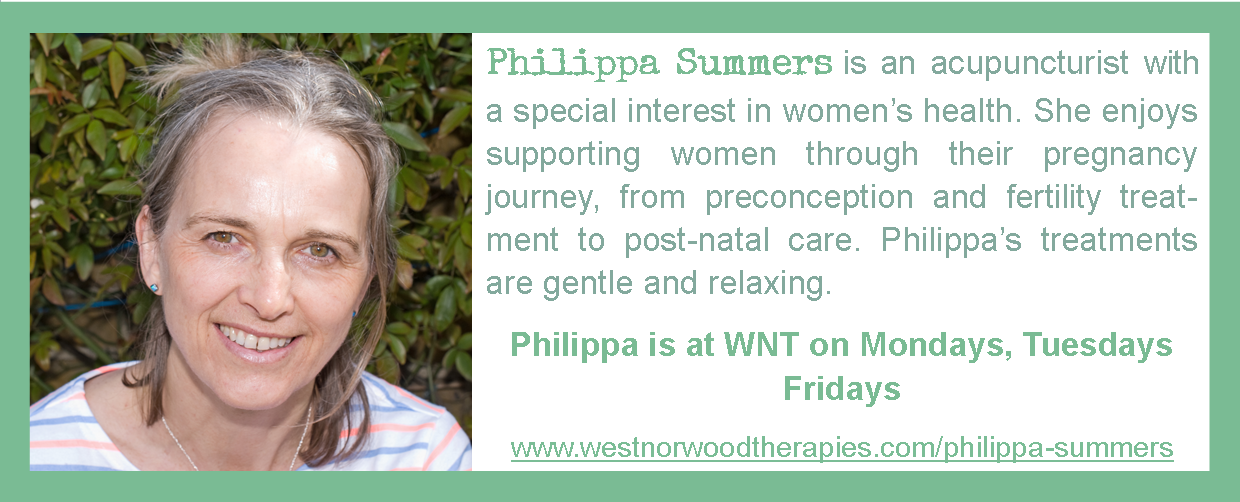
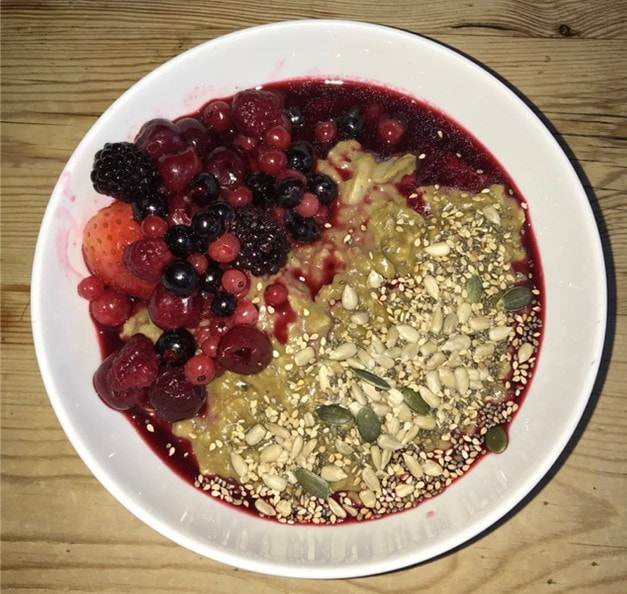




 RSS Feed
RSS Feed
